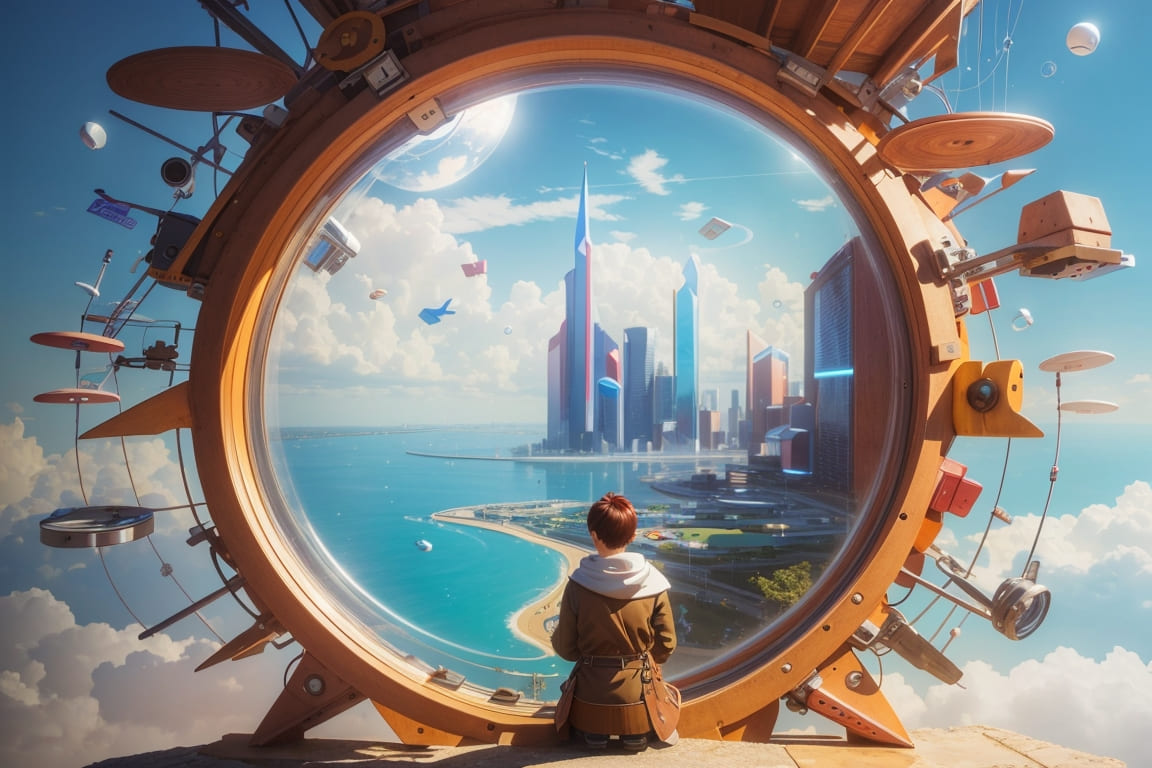In September 2023, OpenAI announced two new features for its latest and most advanced language model, GPT-4. These features are the ability to ask questions about images and to use speech as input for queries.
This makes GPT-4 a multimodal model, which means it can accept multiple types of input, such as text and images, and provide results based on those inputs. Other multimodal models include Bing Chat, developed by Microsoft in partnership with OpenAI, and Google’s Bard model.
What is GPT-4V?
GPT-4V (GPT-4 Vision) is a multimodal model that allows users to upload an image and ask a question about it. This is known as visual question answering (VQA).
GPT-4V is currently available in the OpenAI ChatGPT iOS app and the web interface. To use GPT-4V, you must have a GPT-4 subscription.
How does GPT-4V work?
GPT-4V is trained on a massive dataset of text and images. This dataset includes images that have been labeled with captions and descriptions. When GPT-4V is given an image, it uses its knowledge of the dataset to generate a caption or description for the image.
GPT-4V can also be used to answer questions about images. For example, you could ask GPT-4V to identify the objects in an image, describe the scene in an image, or explain the meaning of an image.
How was GPT-4V developed?
OpenAI has been working on GPT-4V since 2022. The model was trained using a technique called reinforcement learning from human feedback (RLHF). In RLHF, humans provide feedback on the model’s outputs. This feedback is used to improve the model’s performance.
Before releasing GPT-4V, OpenAI conducted extensive testing to identify potential issues. These issues included the model’s ability to generate harmful or illegal content, inaccuracies based on demographics, and cybersecurity breaches.
Applications:
- Image captioning: ChatGPT Vision can be used to generate captions for images. This can be helpful for people who are visually impaired or for people who are trying to understand the content of an image.
- Visual question answering (VQA): ChatGPT Vision can be used to answer questions about images. For example, you could ask ChatGPT Vision to identify the objects in an image, describe the scene in an image, or explain the meaning of an image.
- Image search: ChatGPT Vision can be used to search for images that are similar to a given image. This can be helpful for finding images that are related to a particular topic or for finding images that have a particular style.
- Image classification: ChatGPT Vision can be used to classify images into different categories. For example, ChatGPT Vision could be used to classify images as being of animals, people, or landscapes.
- Object detection: ChatGPT Vision can be used to detect objects in images. For example, ChatGPT Vision could be used to detect cars, faces, or buildings in images.
- Image segmentation: ChatGPT Vision can be used to segment images into different regions. For example, ChatGPT Vision could be used to segment an image of a person into their head, torso, and legs.
- Image editing: ChatGPT Vision can be used to edit images. For example, ChatGPT Vision could be used to change the color of an object in an image or to remove an object from an image.
- Image generation: ChatGPT Vision can be used to generate new images. For example, ChatGPT Vision could be used to generate images of realistic-looking people or landscapes.
- Creative content generation: ChatGPT Vision can be used to generate creative content based on images. For example, ChatGPT Vision could be used to generate poems, stories, or scripts based on images.
ChatGPT 4 Vision vs Google Bard:
| Feature | ChatGPT Vision | Google Bard |
|---|---|---|
| Underlying language model | GPT-4 | LaMDA |
| Image input | Supported | Supported |
| Speech input | Supported | Not supported |
| Multimodal capabilities | VQA, image search, image classification, object detection, image segmentation, image editing, image generation, creative content generation | VQA, image search, image classification, object detection, image segmentation, image editing, image generation |
| Availability | Publicly available | Limited access |
| Pricing | Paid subscription | Free |
| Strengths | Strong performance on VQA tasks, ability to generate creative content based on images | Access to Google’s vast knowledge base, ability to provide real-time information |
| Weaknesses | Can generate inaccurate or misleading information, can be biased | Limited access, still under development |
Overall, ChatGPT Vision and Google Bard are both powerful multimodal models that can be used to understand and interpret images. However, they have different strengths and weaknesses. ChatGPT Vision is better at generating creative content based on images, while Google Bard has access to a wider range of information.
Conclusion:
ChatGPT Vision is a powerful new tool that has the potential to revolutionize the way we interact with images. By combining the power of GPT-4 with the ability to understand images, ChatGPT Vision can be used for a wide variety of tasks, such as image captioning, visual question answering, image search, and creative content generation.
While ChatGPT Vision is still under development, it has the potential to be a valuable asset for a variety of users. For example, ChatGPT Vision could be used by visually impaired people to understand the content of images, by students to learn about different topics, and by artists to generate new ideas.
As ChatGPT Vision continues to develop, it is likely that we will see even more innovative and creative uses for this powerful tool.


Leave a Reply